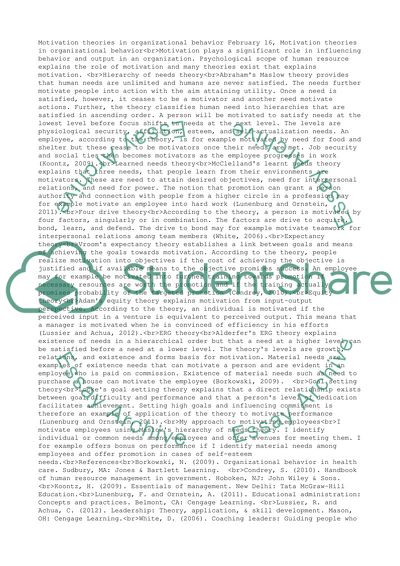Motivation Theories in Organizational Behavior Assignment. Retrieved from https://studentshare.org/management/1629131-motivation-theories-in-organizational-behavior
Motivation Theories in Organizational Behavior Assignment. https://studentshare.org/management/1629131-motivation-theories-in-organizational-behavior.


